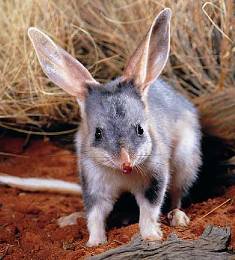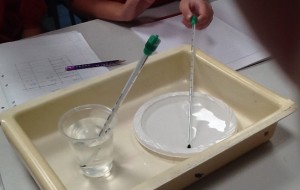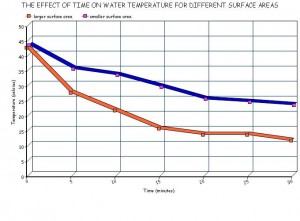The year fives are learning about animal adaptations and how these adaptations help them to survive in their different habitats. In particular, we are learning about the adaptations of Australian plants and animals that live in the harsh conditions of our deserts. Approximately half of Australia is covered in desert environments. Plants and animals that live in our deserts have developed some very clever adaptations to help them survive the arid conditions.
 In this investigation the children were learning about why some animals, such as the Bilby, have very large ears. The bilby’s ears have a large surface area, which they use to help them cool down through a process called ‘heat transfer’. Bilbies use ‘heat transfer’ when heat from the blood in their ears transfers into the cooler air surrounding them. This helps them to cool down in a more water efficient way than evaporation by sweating.
In this investigation the children were learning about why some animals, such as the Bilby, have very large ears. The bilby’s ears have a large surface area, which they use to help them cool down through a process called ‘heat transfer’. Bilbies use ‘heat transfer’ when heat from the blood in their ears transfers into the cooler air surrounding them. This helps them to cool down in a more water efficient way than evaporation by sweating.
To test out this claim we designed an investigation to test whether objects with a larger surface area will in fact cool down faster. To do this we used the same amount of hot water in two containers with different surface areas. We then measured the temperature every five minutes to see which cooled faster.
The result was that the water in the plastic plate with the larger surface area cooled more rapidly than the water in the plastic cup. This shows that having a greater surface area can help things to cool down (or heat up) more quickly.
Below is a graph showing the results of one of the student’s investigations made using the online chart tool.

